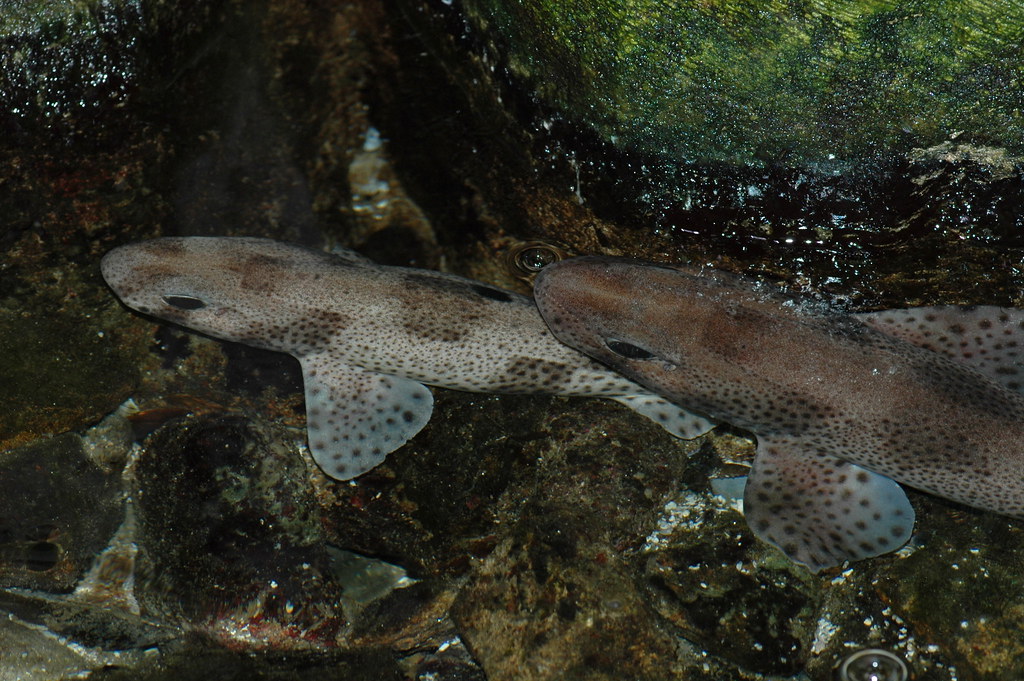They are one of the smallest cat sharks in the family. Unlike other members of its genus, this slender, diminutive shark has a short, rounded snout and very short furrows at the corners of its jaws. It has indistinct darker saddles beneath each dorsal fin and two dark bands on the caudal fin, as well as a prominent crest of enlarged dermal denticles along the upper caudal fin margin.
 The nostrils are divided by triangular flaps of skin on their anterior rims. The horizontally oval eyes are placed somewhat high on the head, and equipped with rudimentary nictitating membranes (protective third eyelids). There are low ridges beneath the eyes, and tiny spiracles behind them. The large, wide, arched mouth bears very short furrows at the corners. There are 48 tooth rows in the upper jaw, and fewer in the lower jaw; each tooth has a narrow central cusp flanked by lateral cusplets.
The nostrils are divided by triangular flaps of skin on their anterior rims. The horizontally oval eyes are placed somewhat high on the head, and equipped with rudimentary nictitating membranes (protective third eyelids). There are low ridges beneath the eyes, and tiny spiracles behind them. The large, wide, arched mouth bears very short furrows at the corners. There are 48 tooth rows in the upper jaw, and fewer in the lower jaw; each tooth has a narrow central cusp flanked by lateral cusplets.
The natural history of the dwarf sawtail catshark is poorly known. Males attain sexual maturity at around 25 cm (9.8 in) long, and females at 27–30 cm (11–12 in) long
Renowned shark expert Stewart Springer described the dwarf sawtail catshark in a 1979 National Oceanic and Atmospheric Administration (NOAA) Technical Report. Since then, due to the lack of research, there is not much information about this fish species.
According to Wikipedia and planetsharkdivers.com













